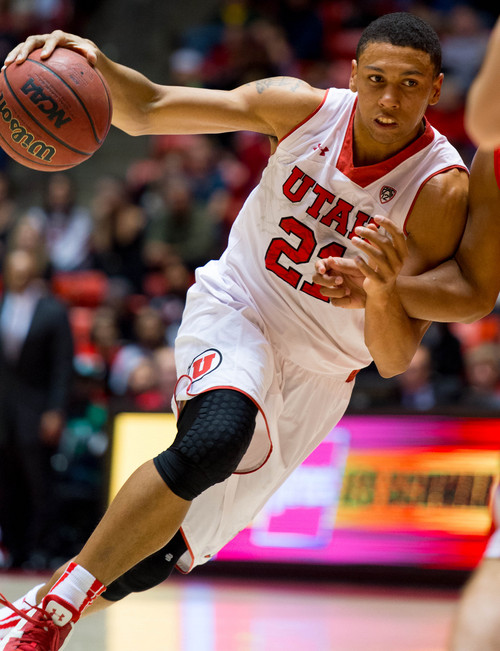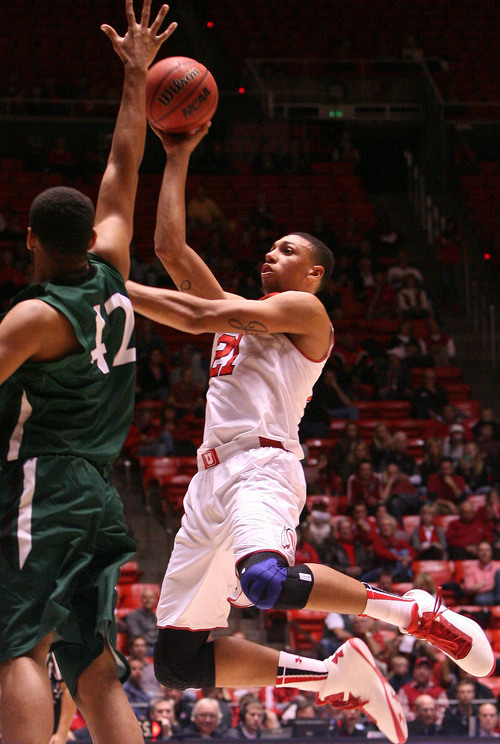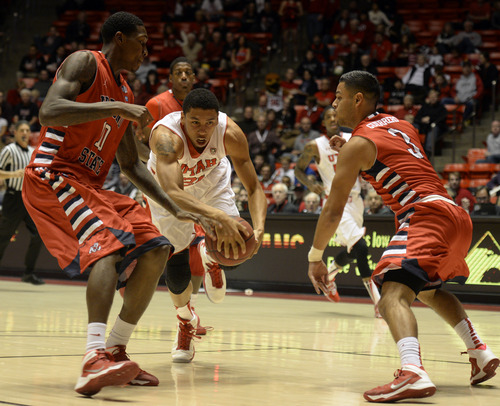This is an archived article that was published on sltrib.com in 2013, and information in the article may be outdated. It is provided only for personal research purposes and may not be reprinted.
The Pac-12 has been a monster during the nonconference portion of the season.
Really, there's no other way to describe how good the league has been in the first two months.
Before last Thursday — when UCLA lost to Duke and USC lost to Long Beach State — the Pac-12 had won 23 consecutive games against the rest of the country. The depth in the league is better than it has been in years, and some national media types wonder if the Pac-12 isn't the best conference in the nation overall.
The proof lies in the results. Arizona is unbeaten, ranked number one, and owns victories over Duke and Michigan. Oregon is close to being ranked in the top-10, and has beaten the likes of Georgetown, Ole Miss, and Illinois. And who can forget Colorado's last-second win against Kansas?
The league is simply a different story this season. The bad old days of three years ago — when the Pac-12 was a laughingstock and sent only two teams to the NCAA Tournament — seem long gone. In November and December, the league showed it had elite teams at the top, good ones in the middle and competitive teams at the bottom.
All of which means Utah has lots of work to do, starting in just over a week.
"It's certainly going to be a beast this season," Ute coach Larry Krystkowiak said. "We're anxious to get there, but it's kind of a case of beware what you wish for. There are going to be 18 games and there won't be a guaranteed win in any of those games. The league will be very competitive, and we're excited for it all to begin."
By most RPI measures, the Pac-12 sits third nationally behind the Big-12 and the Big Ten. And while the league is certainly heavy at the top, it has depth for the first time in recent memory. This past week alone, the Utes defeated BYU, and Stanford went on the road and beat No. 10 UConn. In November, Arizona State defeated Marquette and UNLV, and Oregon State beat Maryland.
That said, the league seems to be shaping up in three tiers. Arizona, Oregon, Colorado and UCLA look to be the cream. Stanford, Utah, Arizona State and California sit in the middle. Washington, Washington State, Oregon State and USC have struggled a bit and have suffered the worst losses. A consensus is beginning to emerge that the Pac-12 could send six teams to the NCAA Tournament this season — maybe even seven if things go right.
The struggles of the Mountain West Conference could contribute to this, as the MWC looks like a three-bid league at most.
Pac-12
Predicted order of finish
1. Arizona
2. Oregon
3. Colorado
4. UCLA
5. Arizona State
6. Stanford
7. California
8. Utah
9. Washington
10. Oregon State
11. Washington State
12. USC
Team on the rise
Utah's steady climb to respectability continues. The Utes garnered a bit of national attention by beating BYU for the first time in eight tries. They will enter league play with an 11-1 record, and they have avoided the bad losses that have plagued the bottom four. By the end of the season, the climb could be a bit more than incremental. But eighth place seems about right for now, and would be a big leap from where this program sat two years ago.
Team on the decline
Washington was once one of the power teams in the league. Now, the Huskies are fighting to stay out of the lower tier. UW does have C.J. Wilcox — one of the best shooters and scorers out west. But the Huskies aren't nearly as athletic as they have been. They don't have the big man depth they used to, and the overall talent in the program has dropped dramatically. Lorenzo Romar could be the next Pac-12 coach on the hot seat.
MVP
Not many in college basketball affect the game like UCLA's Kyle Anderson. At 6-foot-9, he's a walking triple-double threat and plays four positions. There are better players in the Pac-12: Arizona State's Jahii Carson is one of the best point guards in the country, Colorado's Spencer Dinwiddie will probably be a first-round pick and Arizona's Aaron Gordon is a celebrated freshman. But take Anderson off UCLA and the Bruins won't sniff the NCAA Tournament. With him, they make it with relative ease and are one of the top four teams in the conference. That's the definition of an MVP.
Biggest surprise
Oregon. It figured the Ducks would be good because Dana Altman is good at reloading with veteran transfers. But Oregon transforming itself into a top 10-type of team has been an eye-opener. The conference's biggest threat to Arizona has athleticism, depth, size, solid guard play and high-octane wings. Shooting guard Joe Young, a transfer from Houston, has been a game-changer and is the Ducks' scoring leader. Point guard Jonathan Lloyd is now one of the best floor leaders in the league.
Projected NCAA Tournament bids
Six.











